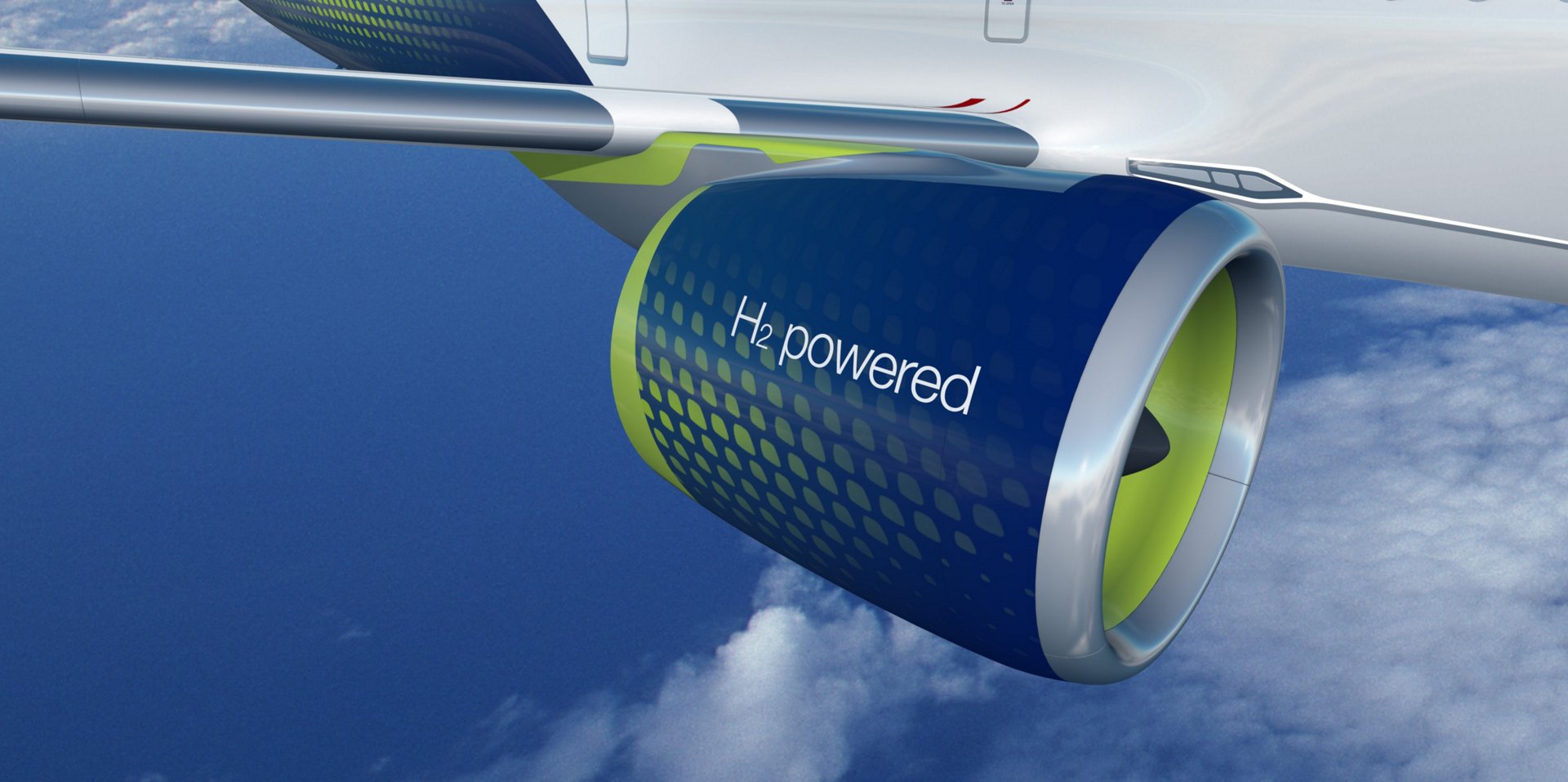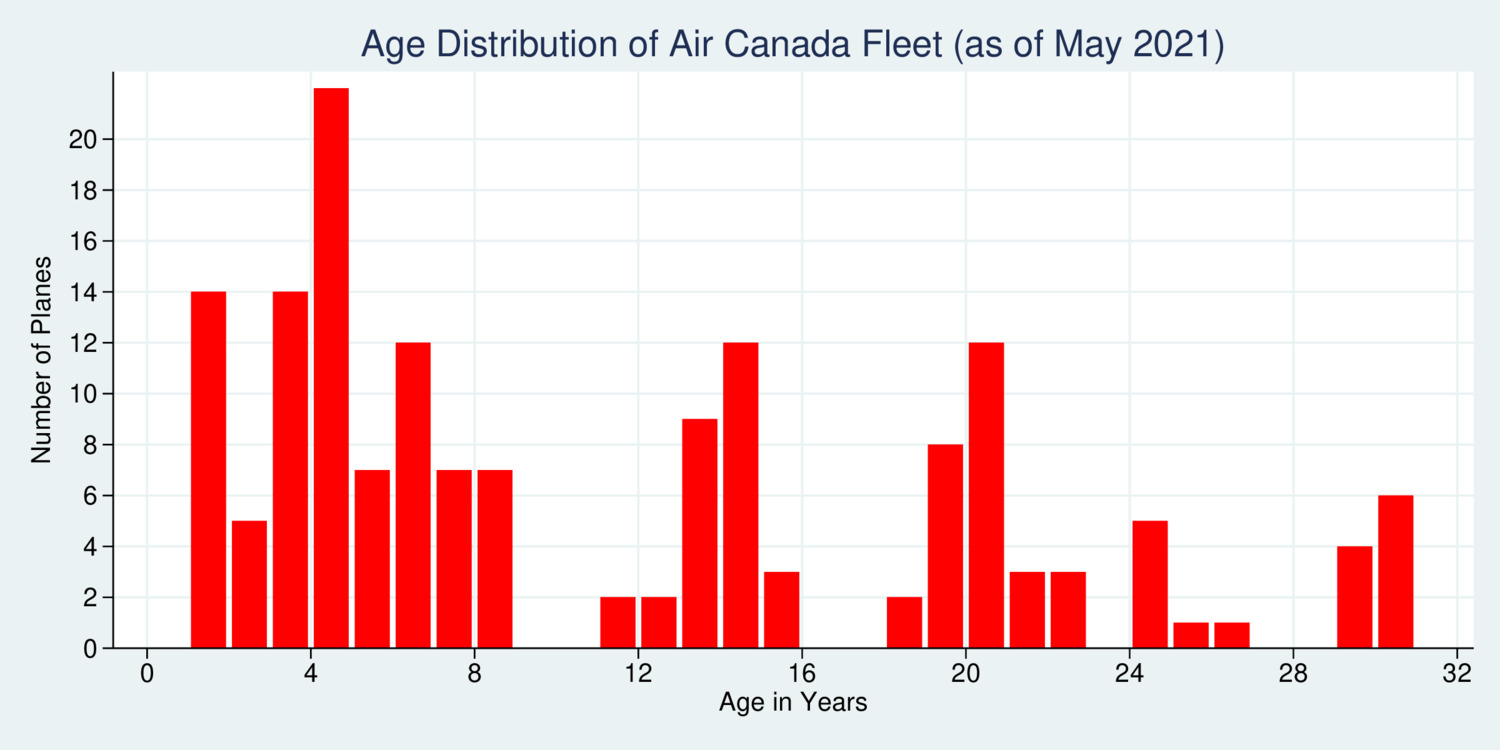This blog is dedicated to my aviation-enthusiast son, who has asked me this important question: can flying ever become sufficiently green so that we can take to the air without a bad environmental conscience?

Image Source: Airbus
European airplane producer Airbus is actively working on solutions for greening aviation. Current generations of jet engines burn kerosene (or more precisely, jet A/A-1 fuel). It has been estimated that aviation contributes to about five percent of the world's climate-warming problem when combining the effects from greenhouse gas emissions and non-CO2 effects (e.g., contrails). Can hydrogen from clean sources provide a viable substitute, especially if air traffic continues to increase in future years?
What is Airbus doing today?
Airbus has launched their ZEROe program to develop the world's first zero-emission commercial aircraft by 2035. This aircraft will be powered by hydrogen combustion through modified gas turbine engines. Airbus will be using liquid hydrogen as fuel for combustion with oxygen from the air. Additional power will be serviced from hydrogen fuel cells. More broadly, Airbus is exploring three different design strategies: a turbofan design, a turboprop design, and a blended-wing-body (BWB) design. Which of these designs will emerge as viable will depend much on costs.
Not every effort automatically leads to success. Airbus has already learned one important lesson from its E-Fan X project, a joint effort between Airbus and Rolls-Royce to develop an experimental hybrid-electric aircraft. Airbus canceled the project in early 2020 as integrating the 2.5MW power unit and a single e-fan into the four-engine BAE 146 turned out to be a formidable challenge. Hybrid-electric propulsion faces one huge dilemma: weight. The key to understanding decarbonizing aviation is energy density.
Why is energy density important?
Energy density is measured in two ways, energy per weight (MJ/kg) and energy per volume (MJ/L). When it is measured by weight it also referred to as specific energy or gravimetric energy density. Jet fuel has a density of 42.8 MJ/kg and 34.8 MJ/L. By comparison, liquid hydrogen has an energy density of just 8 MJ/L by volume, but a remarkable 120 MJ/kg by weight. In other words, flying with hydrogen is lighter but requires more storage volume. The weight advantage of hydrogen is offset to a large degree my the weight of the cryogenic storage system, which has to handle a liquid at –253°C (i.e., 20 K). At the current state of technology, hydrogen actually does not offer a weight advantage. Recent advances suggest that cryo-compressed hydrogen storage is particularly advantageous. Other types of storage (chemical and physical) are also being explored. In order to make hydrogen a viable energy source for aviation, hydrogen storage is a key problem to solve.
Can jet engines run on hydrogen?
Yes. Hydrogen jet engines have been in experimental use at least since the mid-1950s. With some modifications, turbofan jet engines can be operated with hydrogen instead of kerosene. Burning hydrogen in air generates steam as well as nitrogen oxides (depending on the combustion temperature). Hydrogen is in some ways more challenging to handle. Hydrogen combusts more rapidly than kerosene, which means the turbine needs to minimize combustion "flashback" into the fuel supply. The necessary modifications of jet engines appear to be quite tractable, which makes this solution quite attractive. Hydrogen-powered jet engines will probably not look very different from their current kerosene cousins.
What are the main green alternatives to hydrogen propulsion?
Electric and hybrid-electric propulsion are alternatives to burning hydrogen directly in turbofans. Electric propulsion involves electric turbofans and turboprops powered by fuel cells fed with hydrogen, or alternatively powered with electric batteries. Some of these designs are found in early prototypes of smaller planes. However, these electric and hybrid-electric designs may not be suitable for large commercial planes because of energy density challenges.
Will plane fuselages need to be different to accommodate hydrogen?
Hydrogen storage will have important implications on the design of hydrogen-powered aircraft: storage will likely be in the fuselage rather than the wings of an aircraft. This will probably make fuselages longer and larger in diameter. This leads to a complete rethinking of what aircraft bodies should look like. One design from Airbus is the blended wing body (BWB) where wing and body are essentially integrated, without a distinct fuselage. There are numerous advantages to this type of design, including greater fuel efficiency and lower noise. However, passengers may balk at the idea of flying in a windowless aircraft. On the other hand, BWB aircraft will offer scope for significantly more comfortable cabin designs. Perhaps the future of aviation will also come with more legroom and wider seats for economy-class passengers!

Embedded Image: Airbus
Will there be clean sources of hydrogen?
This remains a "big if". Today's hydrogen is almost exclusively derived from fossil fuels, mostly natural gas. Hydrogen only becomes a "green" proposition if it can be made from renewable energy (so-called "green hydrogen") or the CO2 can be sequestrated and stored (so-called "blue hydrogen"). Both types are considerably more expensive than today's supply. Finding a cheap source of green hydrogen is the linchpin of a greener future for aviation. Several governments, including Canada's, are pursuing a hydrogen strategy (Dec. 2020) to support rapid innovation in this nascent industry.
What else is needed to support hydrogen use in aviation?
Put simply: infrastructure. Similar to today's supply of kerosene to airports, and storage at airports, hydrogen will need its own infrastructure for transportation and storage in order to fuel up airplanes. The growth of aviation occurred along with the growth of hydrocarbon fuels, and switching to another fuel source will require costly infrastructure upgrades. This poses a formidable challenge as this is a classic chicken-and-egg problem: hydrogen aviation requires hydrogen infrastructure, and hydrogen infrastructure requires a market for aviation hydrogen. It is very likely that governments will have to subsidize hydrogen infrastructure during early stages of deployment.
Will all types of planes be able to operate with hydrogen?
Likely not. Airbus thinks that most of its long-range planes will not be powered by hydrogen but by carbon-neutral bio-fuels (also known as synfuels). Hydrogen will probably not a one-size-fits-all solution. Instead, it is likely that different types of aircraft will need different decarbonization solutions.
How long would a transition to hydrogen take?
Aircraft have a long lifespan. This means transitions of any type take a long time. As mentioned above, the use of hydrogen requires changes to the design of planes, so it is not just a matter of replacing one engine with another. In recent years, jet engines have become bigger in order to facilitate a higher bypass ratios and make them more fuel-efficient (and quieter too). Even fitting new engines to existing airframes is not trivial, as Boeing learned painfully with their 737-MAX. The entire fleet of 737-MAX planes was grounded worldwide following two crashes caused by failures of their automated maneuvering system (MCAS), which had been introduced to deal with differences in maneuvering characteristics caused by the new engines sitting higher and more forward than before.
Looking at the age distribution of planes of Air Canada, for example, reveals a wide range. The oldest planes have been in service for about 30 years. The average age of the fleet is 10.5 years. Air Canada is quite typical for major airlines. The reason for flying newer planes is mostly cost: newer planes are more efficient, and this makes them more economical to operate. Airlines also shift to new types of planes when their business model adjusts to structural changes in customer demand.

click on image for high-resolution PDF version
The above diagram shows that turning over an aircraft fleet is much slower than turning over the fleet of motor vehicles on our streets. Furthermore, Air Canada operates a newer fleet than many other airlines. When airlines retire planes, they often retire an entire model category because there are economies of scale in maintaining more planes of the same type, For example, in July 2020 British Airways retired its entire fleet of Boeing 747s. Aircraft manufacturers also terminate production series when underlying economic factors change. The Airbus A380, the world's largest passenger jet plane, was taken out of production just 12 years after its introduction. When too few planes of a type are sold, this becomes less profitable and it makes more sense to switch the production line to a more profitable model. It turned out that the Airbus A350-900 is simply a much more popular choice among airlines.
The road to flying with hydrogen will be slow, and thus it is important to have a transition strategy that lowers the CO2 footprint until hydrogen planes become available, along with a clean supply of hydrogen. Aviation biofuel ("biokerosene") appears to be a promising route, according to IATA.
Is the future of aviation green?
Without doubt, decarbonizing aviation is difficult and expensive. It will take more time to decarbonize aviation than it will take to electrify motor vehicles. Aircraft designers and jet engine producers are envisioning a future of aviation that can be green, and we can fully expect that it will be green eventually. The technological hurdles are not insurmountable, and innovation will eventually bring down the cost of these new technologies. As I like to say, if the engineers at the Jet Propulsion Laboratory can manage to fly a helicopter on Mars with solar power, engineers in the aircraft labs can surely make flying on Earth green for all of us too.
But what about contrails?
One climate change problem hydrogen cannot solve satisfactorily. Contrails and contrail cirrus constitute the main climate impact of hydrogen-powered aircraft. Because hydrogen planes will release more water vapor, they would lead to the formation of contrails over a wider range of altitudes than conventional kerosene-powered planes. This means that hydrogen-powered planes need to find new ways of reducing contrails. This is an active area of research (Teoh et al., EnvSciTech 2020). Researchers have found that changing the altitude of a small number of flights could significantly reduce the climate effects of aviation contrails.
Further readings and information sources:
- Airbus: ZEROe: Towards the world's first zero-emission commercial aircraft
- Caspar Henderson: They hydrogen revolution in the skies, BBC News, April 7, 2021.
- IATA Fact Sheet: Liquid hydrogen as a potential low-carbon fuel for aviation, August 2019.
- Roland Berger (Consulting Firm): Hydrogen | A future fuel for aviation?, March 2020.
- McKinsey &. Co, for the Clean Sky 2 Joint Undertaking of the European Union: Hydrogen-powered aviation: A fact-based study of hydrogen technology, economics, and climate impact by 2050, May 2020.
![[Sauder School of Business]](logo-ubc-sauder-2016.png)
![[The University of British Columbia]](logo-ubc-2016.png)